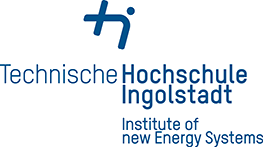Joshua Kiplagat Ngetuny
Lessons learnt from the UAS Model Workshops
Transforming higher education training through applied teaching and learning
The UAS concept
The UAS model application to teaching and learning centers around three pillars;
- A practical oriented Curriculum
- Continuous industry engagement
- Internships and final year projects
Unlike the conventional approach to teaching and learning where a hard boundary exists between the enabling (core) and non-enabling (periphery) environment, applied science imparts practical relevancy both for the present and future by maintaining a soft boundary between the academy and society.
The need for practical oriented learning and education is a vital component towards driving economic development of any nation like Kenya where manufacturing is envisaged to be the next big thing.
A Practical oriented Curriculum
A truly practical degree following the UAS concept is premised on a clear action plan backed by a curriculum. The curriculum must capture the aspirations and needs of the society/region. To achieve this, a needs assessment, involving industry players and following the examples of those who have succeeded in a similar path is vital.
Successful delivery of a curriculum must be backed by robust and interactive quality assurance tools. This can be in the form of lecturer evaluation by students, on boarding of new lecturers and feedback on the same. In addition, involving industry in development of the curriculum
Continuous industry engagement for problem solving
Conceptual seminars are organized where companies and partner organizations are invited to present the challenges facing them to the University for Students to work on them and come up with solutions. This is followed by a presentation to a panel comprising both faculty and industry representatives. This is tied to the problem based approach to teaching and learning where students work on case studies.
Internships imparts soft skills and ideas for final year projects
The internship semester is the key differentiator of UAS from classical universities. Industrial internship/attachment is a requirement for course completion. Students are taken through a pre-internship seminar where they are sensitize on soft skills required for the workplace, in addition, they are given or shown a guideline on how to write a technical internship report. At the end of the internship, the students do a presentation and submit the technical report.
In addition to internships, students write their final year projects/thesis at a partner organization or industry.
Enhancing the implementation of research findings in industry through applied research & Technology transfer
In the UAS model, the university works closely with industry to provide solutions to societal problems. While these collaborations are initiated and sustained through individual professors working with their contacts in industry, the university provides a supporting environment for the same through reduction of teaching load.
As much as possible, students are involved in industry and government funded research projects where they write their thesis. The UAS model positions the university as a R&D centre for industry.
University networks form a key path in harnessing resources for research and knowledge transfer to industry and for regional development. In addition, joint research and conferences with industry enhances the delivery of tangible outcomes and outreach.
The government, university and private sector working together to develop infrastructure and spaces for incubation and development of start-ups enhances the uptake of research.


Leave A Comment